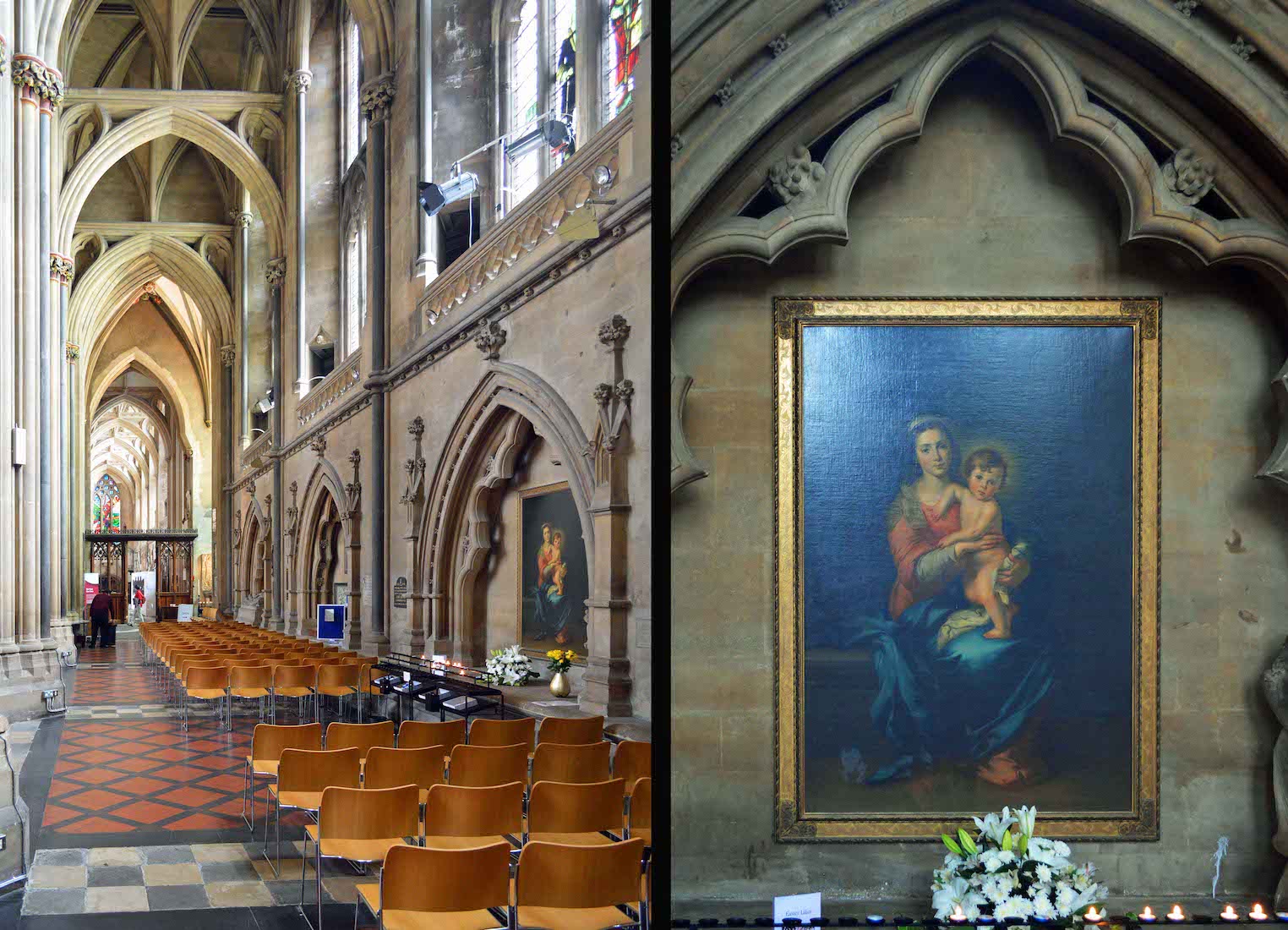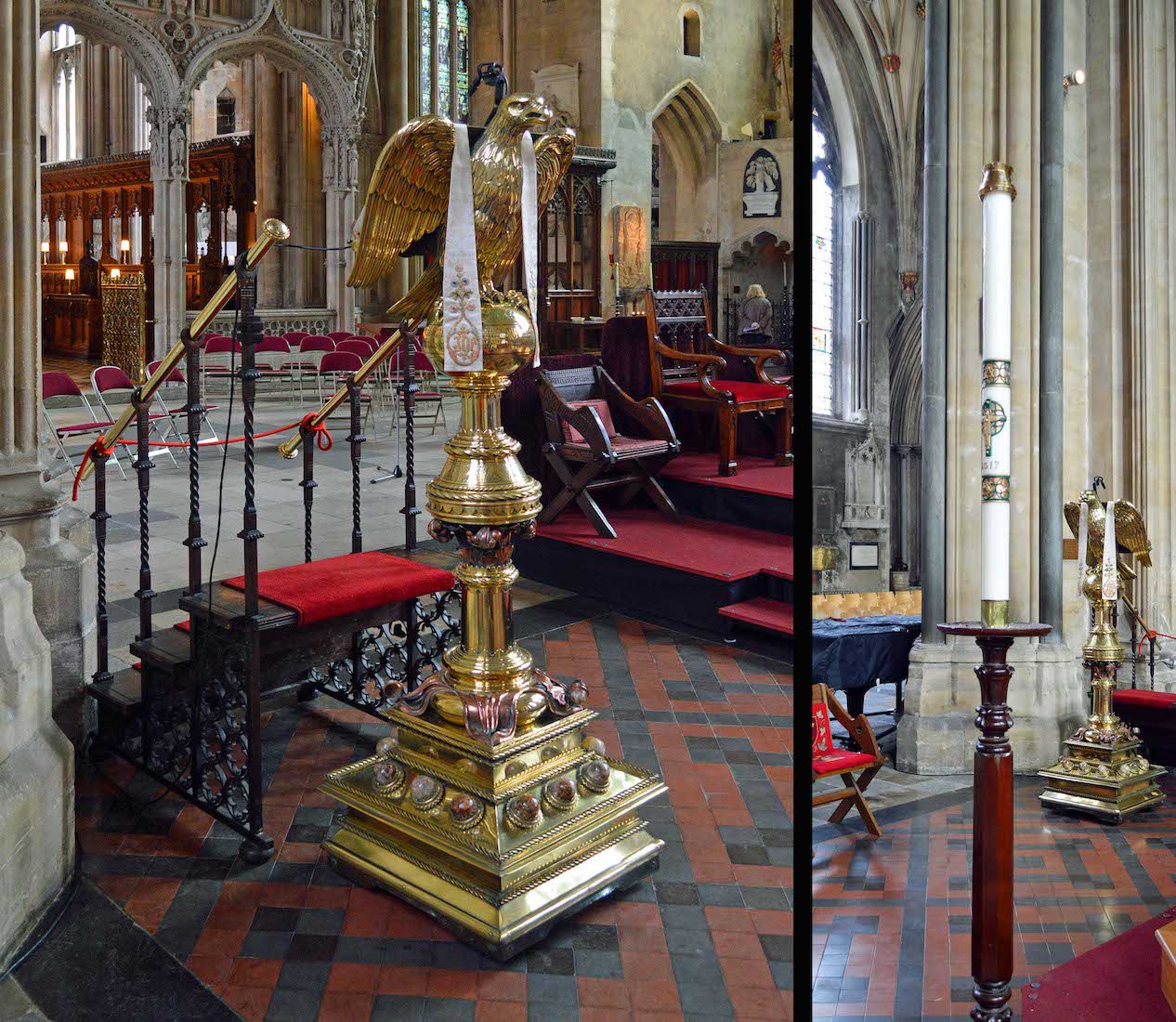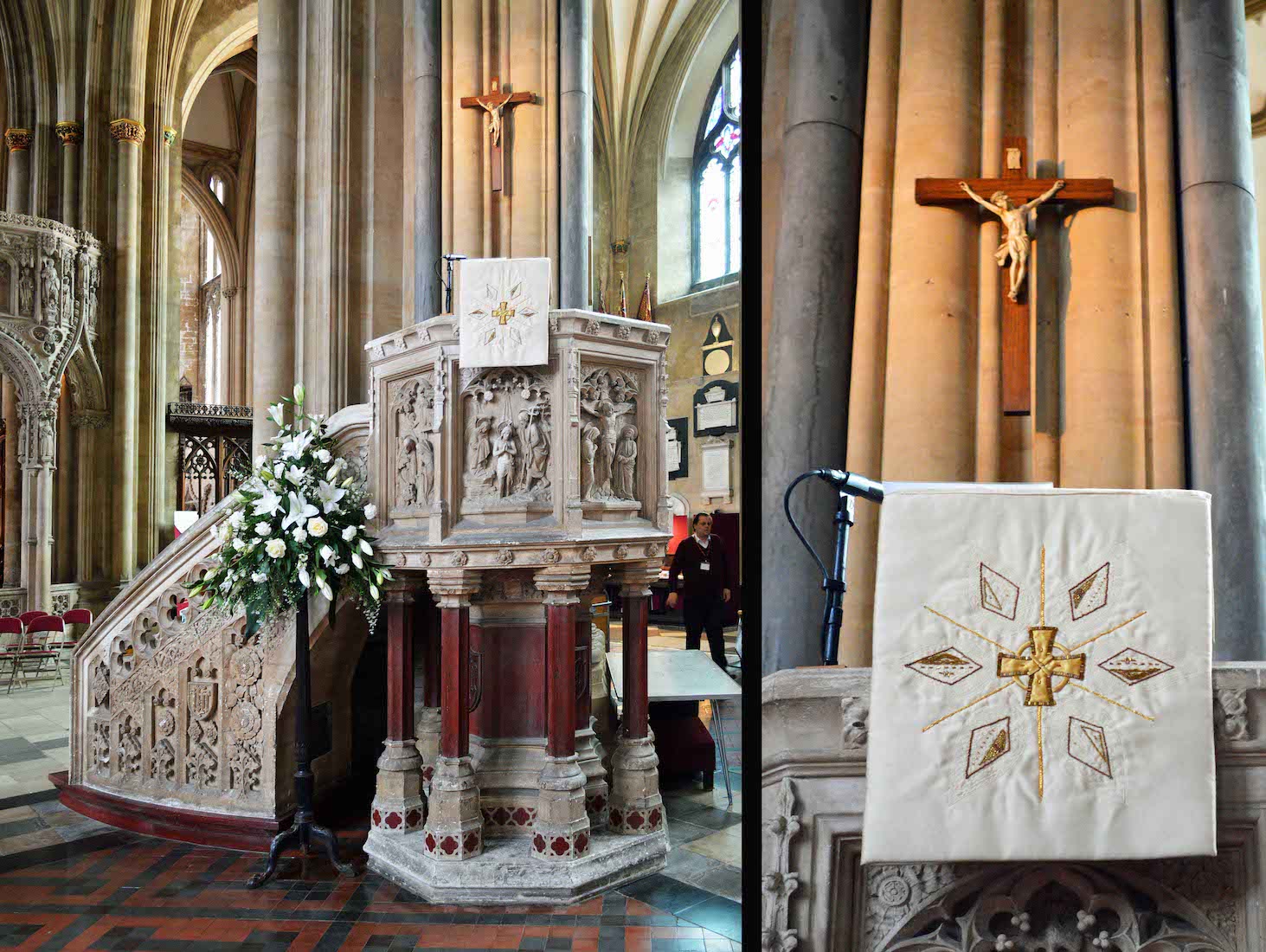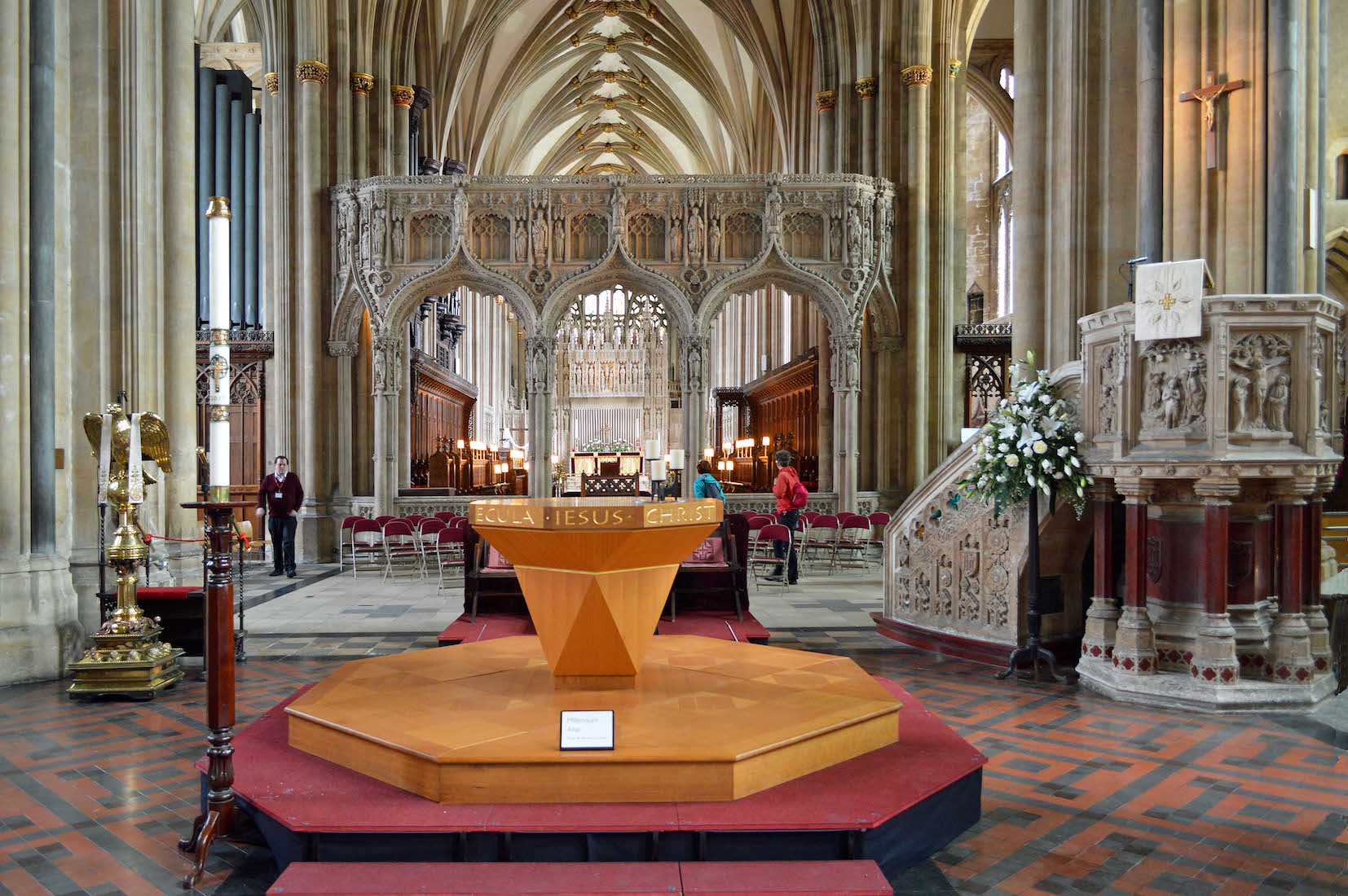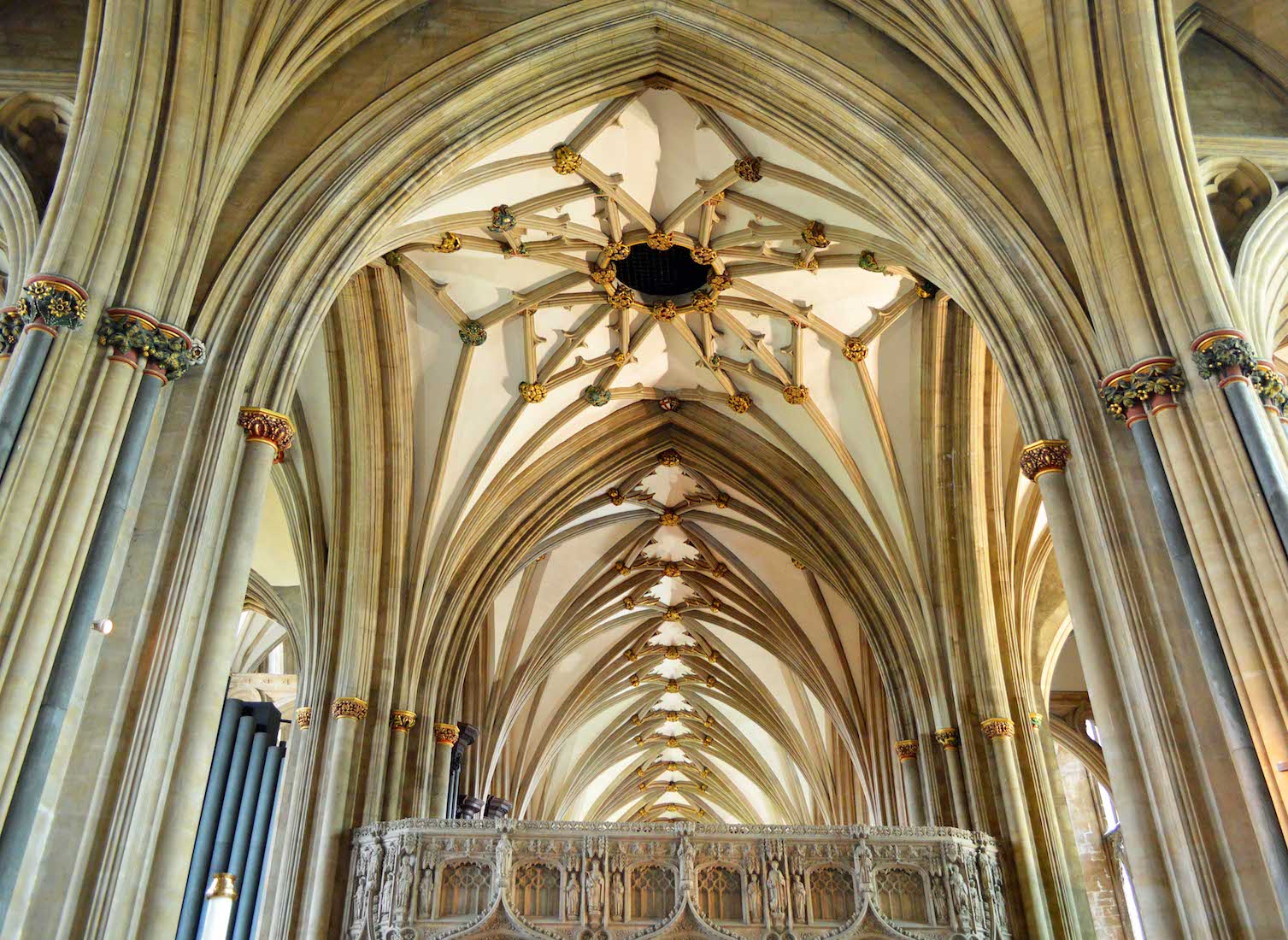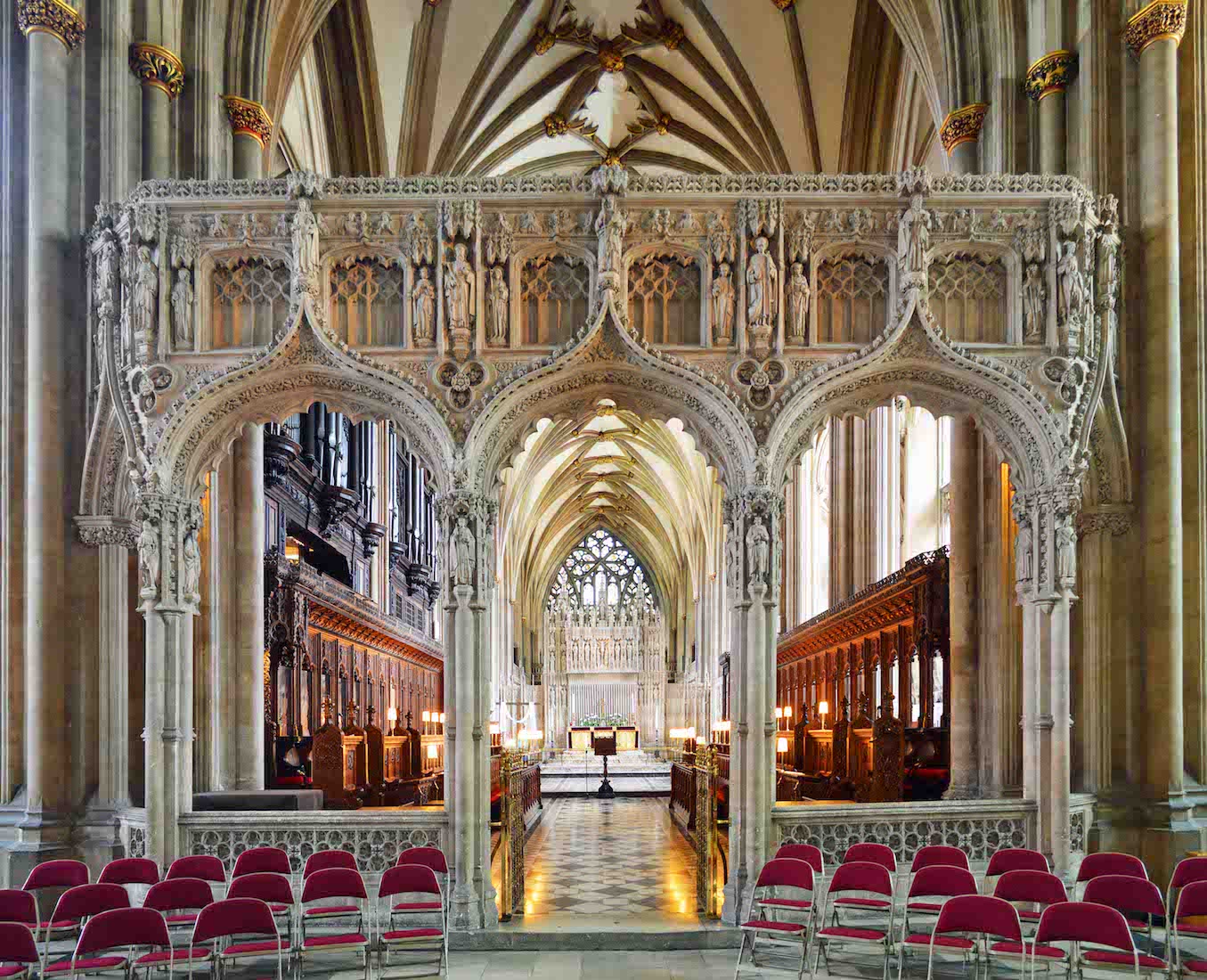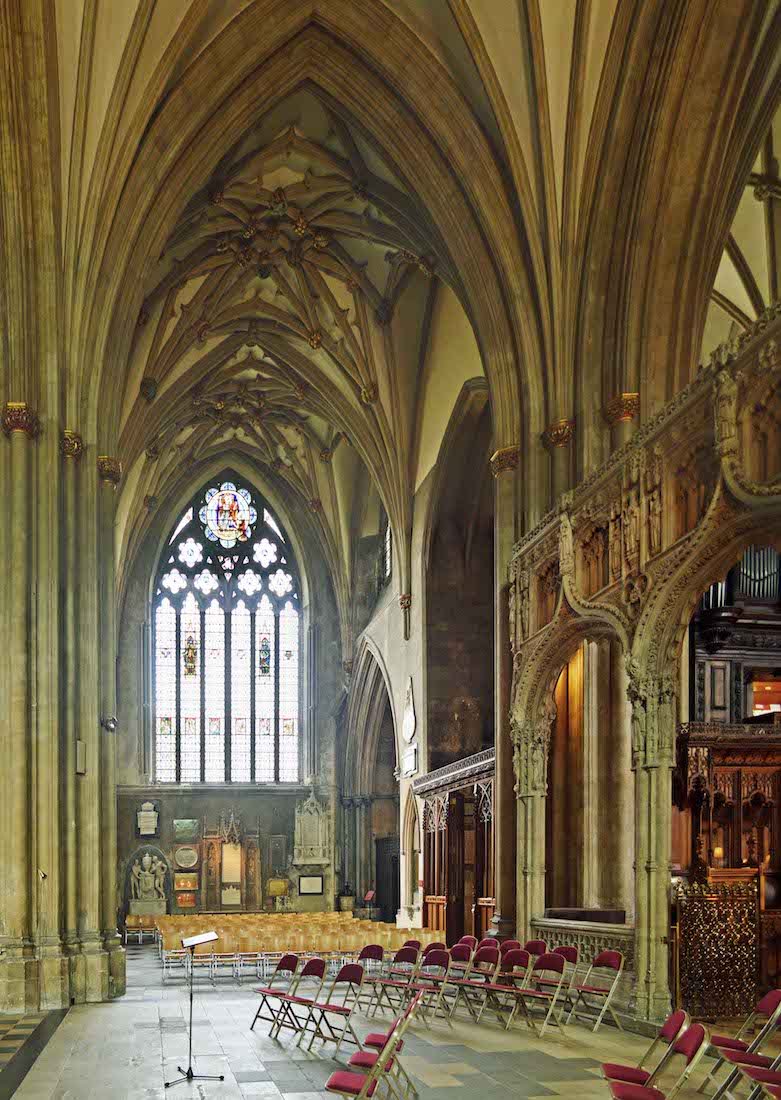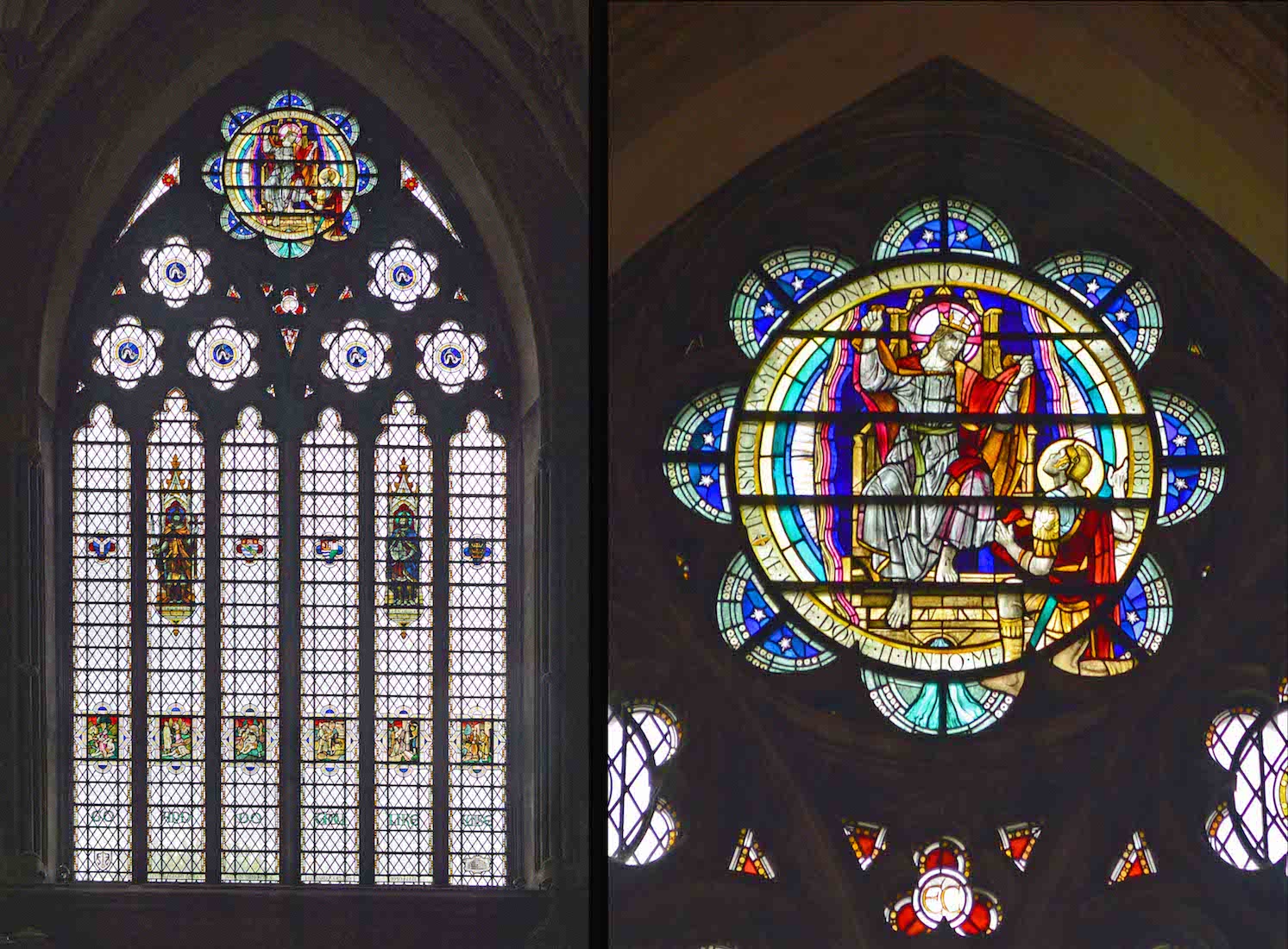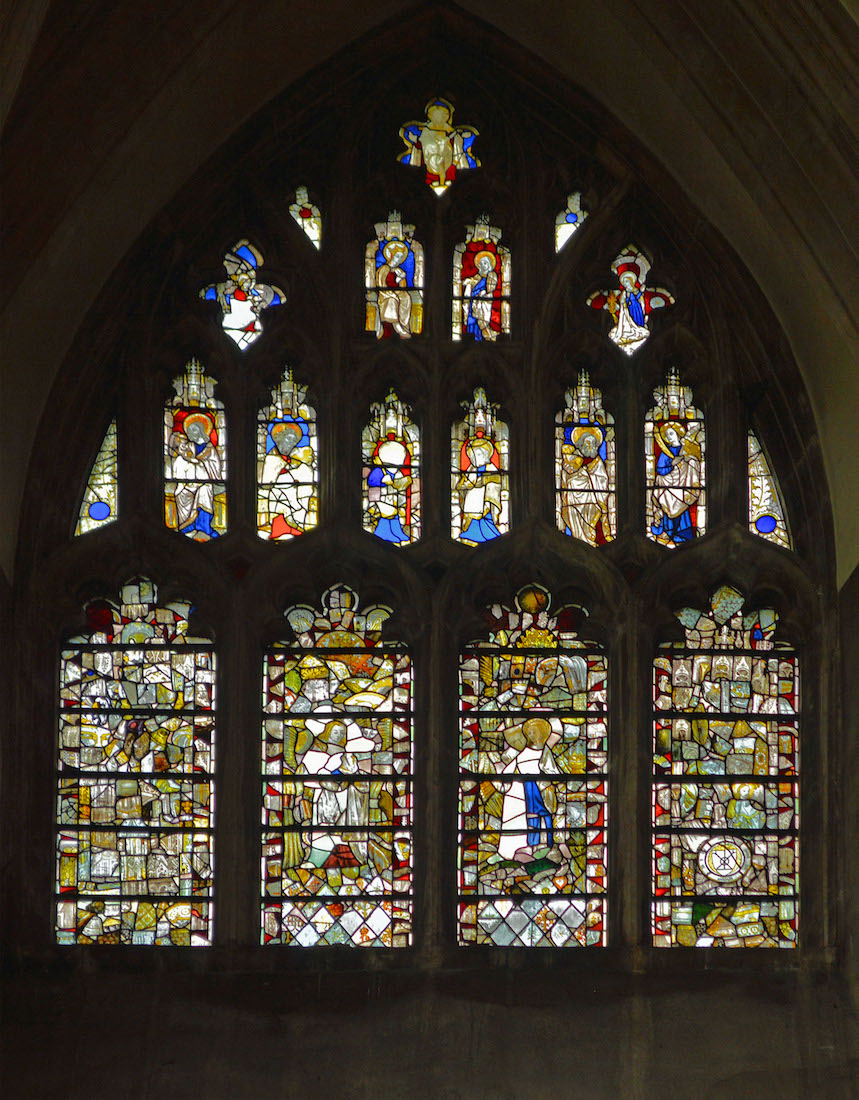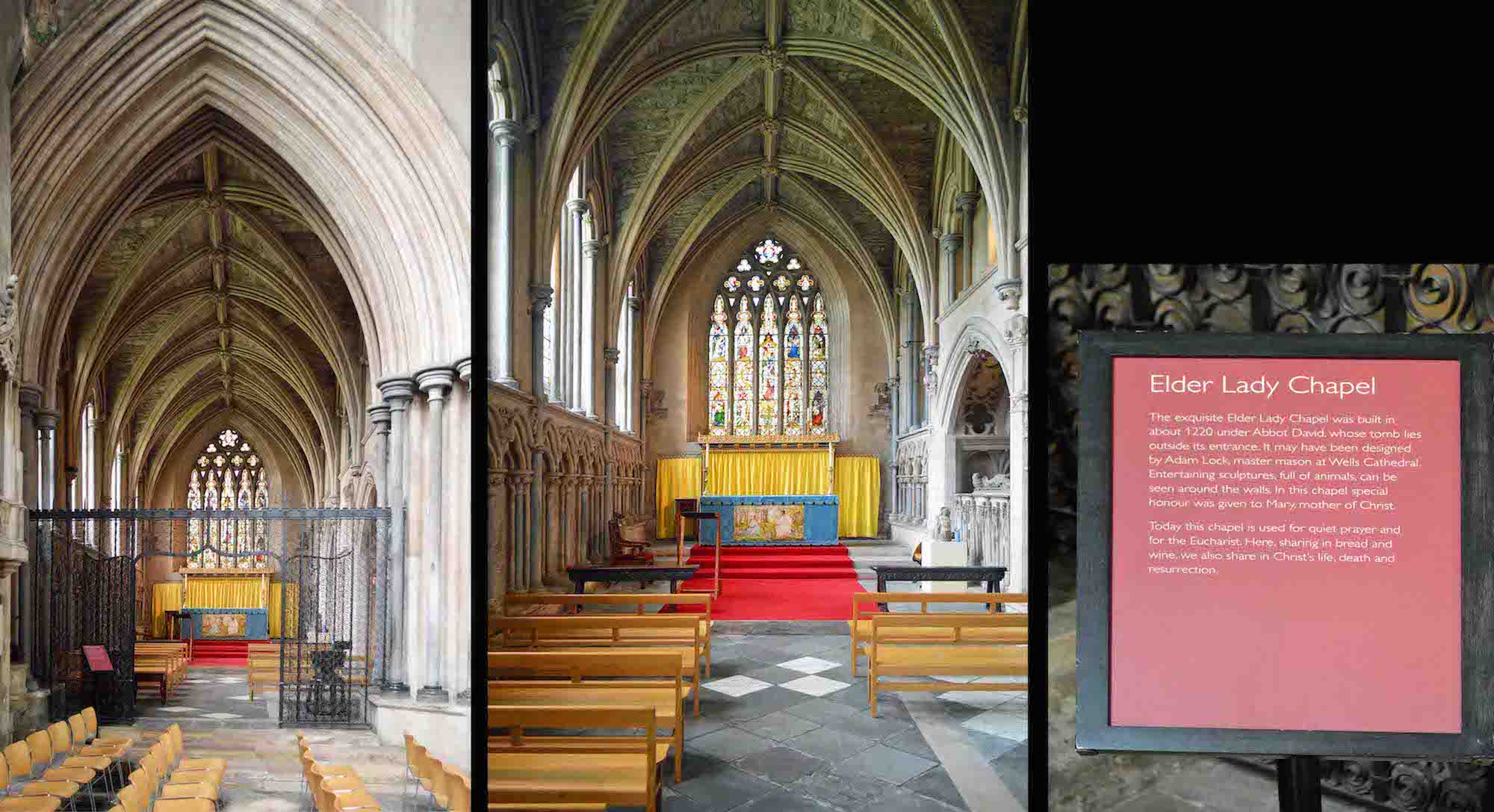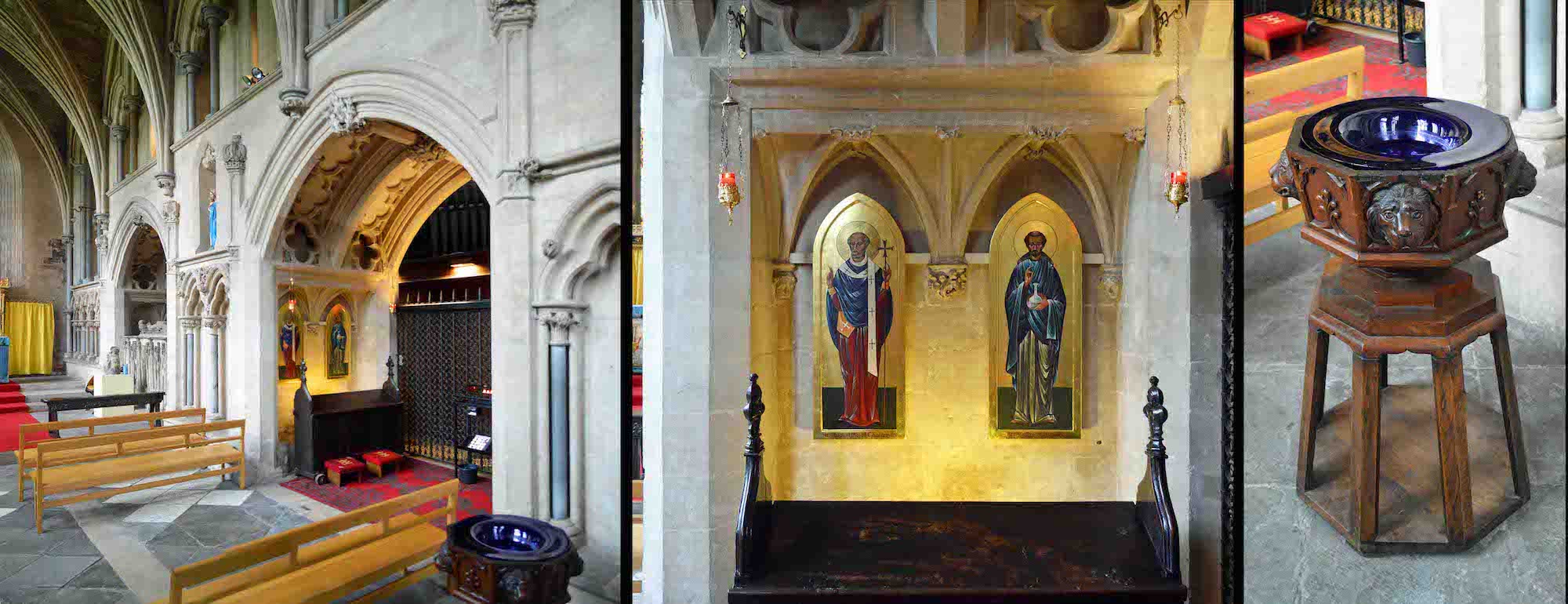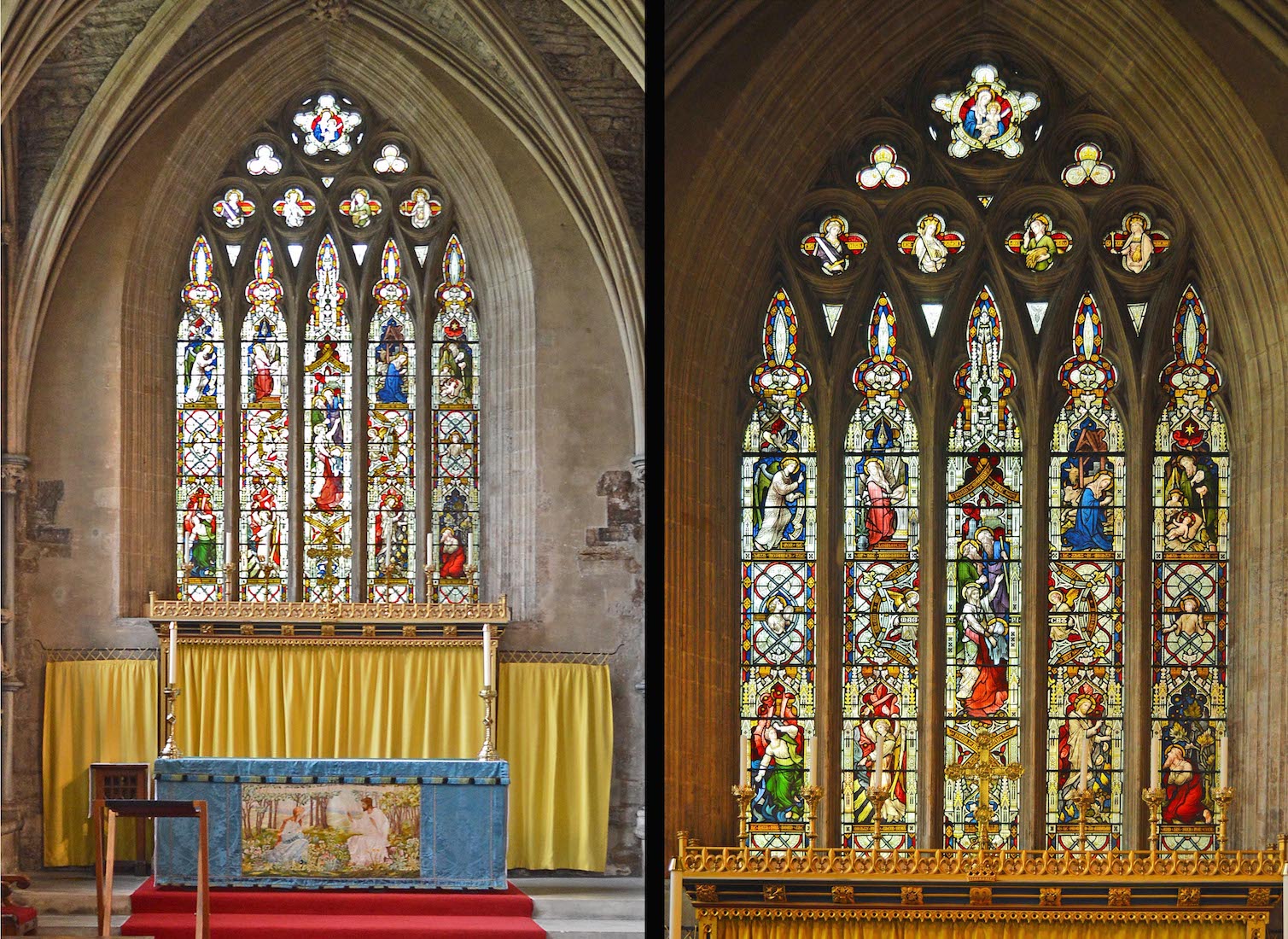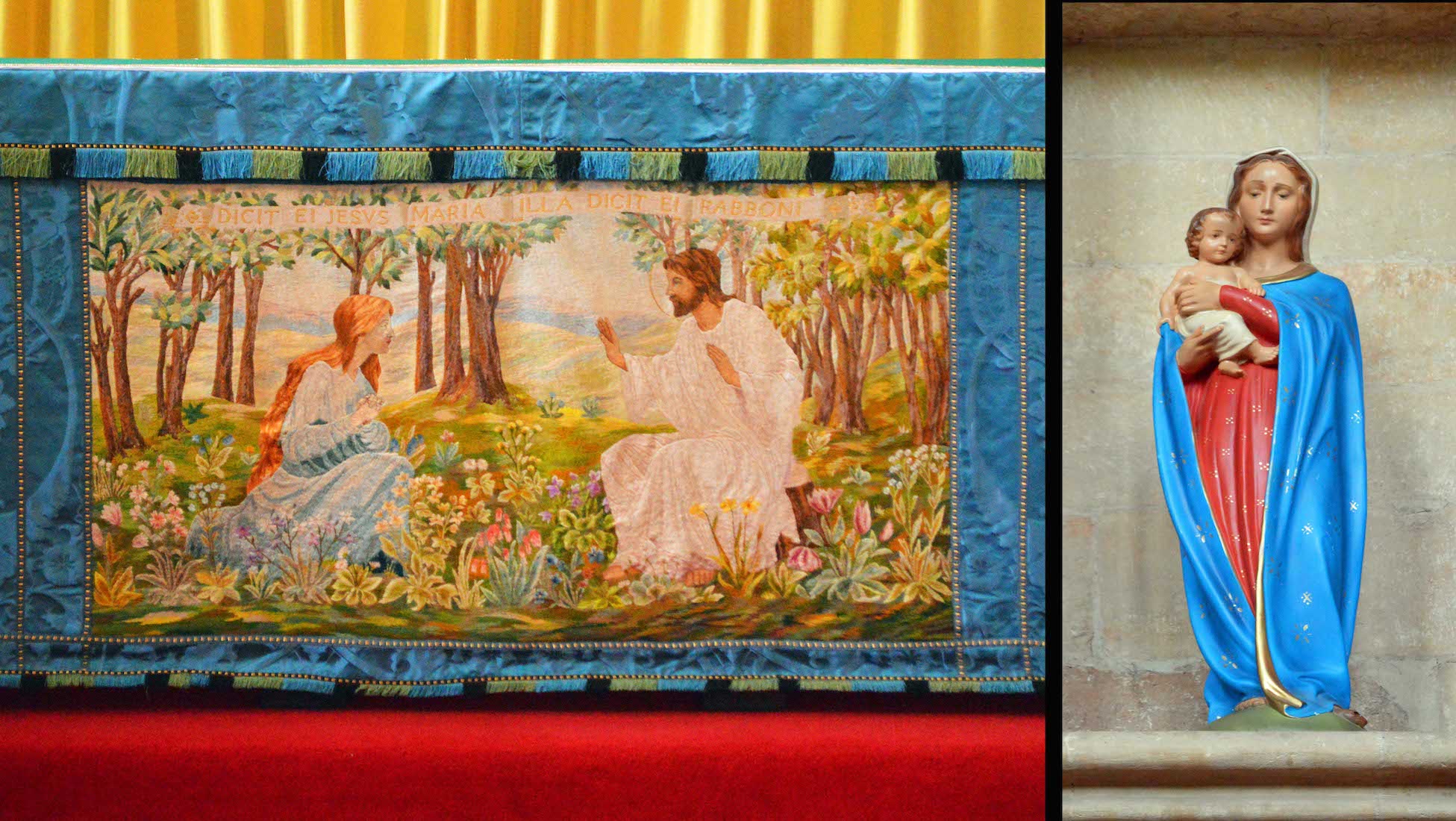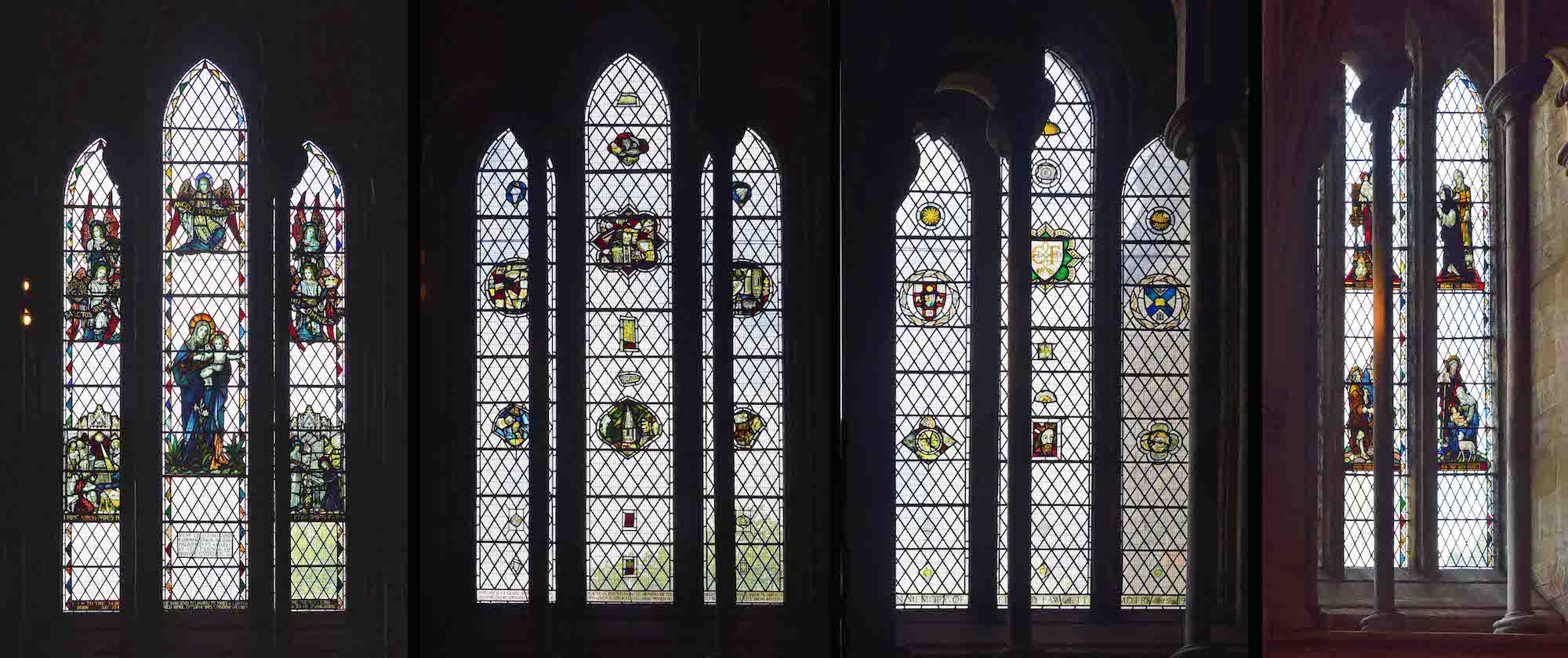
We move across the nave to look at the South wall. The pattern is similar to that of the North wall, although we notice a painting in one of the lower arches. Also, there are in fact five windows along this aisle, as there is no South side door. PLAN
22. SOUTH NAVE WINDOWS
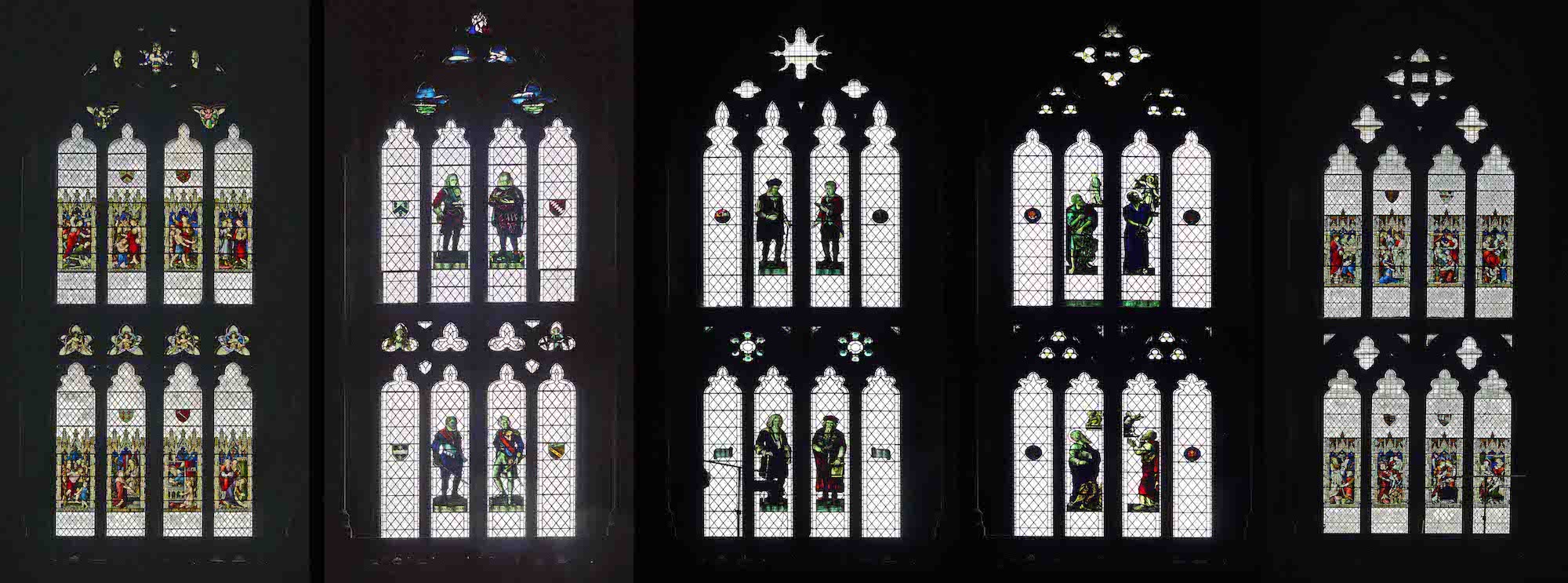
Some thoughts on these windows (from left): • Scenes from the life of Christ above and Old Testament scenes below; • Robert Blake and Walter Raleigh, Sir Francis Drake and Viscount Nelson; • William X and Samuel Wesley, Y and John Z; • Encounters with angels: Saul on the Damascus road, and Peter in prison; • Same as the window on the extreme left.
23. SOUTH NAVE AISLE AND PAINTING
We see here the South nave aisle looking East, and the painting of Madonna and Child. I have been unable to find details of this painting. We walk along the aisle to its Eastern end.
24. TOMB AT THE EAST OF THE SOUTH NAVE AISLE
There is a tomb memorial at this end of the aisle. The figure on this tomb is Francis Pigou who was Dean of Bristol Cathedral from 1891 to 1916. On the wall to the left are various memorial plaques.
25. CROSSING
The nave altar stands directly beneath the central tower. The square area, defined by four large supporting columns is called the crossing. It is where the two transepts intersect with the East-West axis of the Cathedral. Several chairs stand behind the altar, but we notice particularly the golden lectern to the North, the Paschal candle adjacent to the altar, and the pulpit to the South.
26. LECTERN AND PASCHAL CANDLE
The lectern is used to support the Bible. Many churches have the lectern in the form of a golden eagle. This relates to the verse Isaiah 40:31 : ‘those who hope in the Lord will renew their strength. They will soar on wings like eagles ... ‘. The Paschal candle is lit particularly over the Easter period. There is an allusion to Christ being the Light of the world.
27. PULPIT
The pulpit was created in the late 1800s by J. L. Pearson in a grand and distinctive style in keeping with the original medieval features. A crucifix is affixed to the tower column immediately behind the pulpit.
28. NAVE ALTAR
The Cathedral’s main service of the Eucharist (or Holy Communion) takes place on a Sunday in the crossing using a special altar, designed and built by Luke Hughes to mark the Millennium. This view of the nave altar shows the placing of the Paschal candle, and looks back Eastwards through the Choir to the high altar and the Eastern Lady Chapel beyond.
29. CROSSING VAULTING
The crossing demonstrates the use of Lierne vaulting which uses secondary ribbing to connect the main rib vaulting. The central trapdoor is used to haul building materials up into the upper tower.
30. CHOIR SCREEN
The beautifully decorated choir screen was designed by J. L. Pearson and completed in 1905. It has three wide arches with flamboyant cusps. There are many sculpted figures here including the Good Shepherd, the Virgin Mary and St Paul.
31. DETAIL OF CHOIR SCREEN
I see the wonderful detail in a screen like this and think of the incredible patience and skill of the men who created it.
32. NORTH TRANSEPT
From the nave altar we again look left to the North transept. Once more we have the unusual vaulting, and a large North window with minimal stained glass. On the wall below are a selection of memorial plaques. To the right is the entrance to the Elder Lady Chapel, and closer, the entry to the North Choir Aisle. To our immediate right is the entry to the Choir with a glimpse of the organ console and pipes.
33. DETAILS OF THE NORTH TRANSEPT
The right view shows the transept and the West wall with a doorway to the outside. At the near corner is a flag and rosette commemorating members of 501 Squadron of the RAF who gave their lives while serving with the Squadron. The left view shows a banner and plaques on the column opposite the flag. Here the Centenary of the Bristol Police Constabulary is celebrated, and there is a memorial to Frederic Arthur Cockin, Bishop of Bristol 1946 – 1958.
34. NORTH TRANSEPT NORTH WINDOW
This is the largest window in the Cathedral. The top circlet is particularly fine. The window is called the Colston Window. The issue of Colston is a live controversy in Bristol because of Colston’s involvement in the slave trade. The window bears Colston’s name, the dates of his life, his motto “Go and do thou likewise” and symbols associated with some of his business interests. However, Colston in his own lifetime was regarded as a near saint: he was a great city benefactor.
35. NORTH TRANSEPT EAST WINDOW
This is one of the few remaining original windows with C15 glass. It is very fragmentary in the main lights. The tracery lights have figures of the Four Evangelists, the Annunciation, and Coronation of the Virgin. We now leave the North transept and walk through into the Elder Lady Chapel.
36. ELDER LADY CHAPEL
This exquisite chapel was built in about 1220 under Abbot David, whose tomb lies outside its entrance. It may have been designed by Adam Lock, master mason at Wells cathedral. In this chapel, for centuries, special honour was given to Mary, mother of Christ. It is called the ‘Elder’ Lady Chapel because another Lady Chapel was added at the East end of the choir in 1298.
37. CHAPEL SHRINE
The chapel contains many artworks, including icons of Saint Augustine of Hippo and local Saint Jordan. It is unusual to have a chapel located off the North transept and it is possible that this was done deliberately to evoke the Holy House at Walsingham, which was a centre of Marian devotion. The blue vessel at right is large enough to be used as a baptismal font, but is more likely a stoup for holy water.
38. CHAPEL EAST WINDOW
The chapel contains many artworks, including icons of Saint Augustine of Hippo and local Saint Jordan. It is unusual to have a chapel located off the North transept and it is possible that this was done deliberately to evoke the Holy House at Walsingham, which was a centre of Marian devotion. The blue vessel at right is large enough to be used as a baptismal font, but is more likely a stoup for holy water.
39. CHAPEL ALTAR CLOTH, AND MADONNA AND CHILD
The lovely altar cloth shows a scene of Jesus and Mary in a garden. The text says: Mary said to Jesus, ‘Teacher’. On the South wall of the chapel is a statue of Mary holding the young Jesus. Mary is usually shown clothed in blue as a symbol of purity. Near the statue is the medieval tomb of Lady Margaret Mortimer and Lord Maurice Berkeley.
40. LADY CHAPEL SIDE WINDOWS
The Elder Lady Chapel is brightly lit from four windows on the North side. From left these show: • Mary holding the young child Jesus; • various medieval fragments; • more fragments and three shields; • Simeon blessing the baby Jesus, and a warning to Mary and Joseph to take the child and flee into Egypt.


